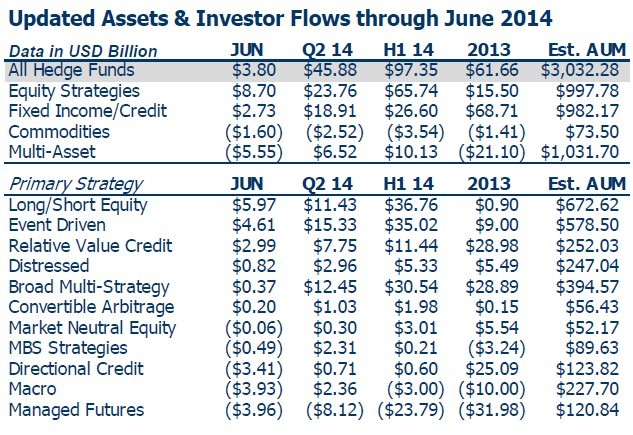Hedge Funds Where Did All the Volatility Sellers Go Focus on Funds
Post on: 13 Июль, 2015 No Comment

By Brendan Conway
A risky way to capitalize on other investors fear isnt working so well this year and the hedge funds which specialize in it have pulled back.
Selling market volatility was massively profitable in 2012-13. Ways to carry out the strategy include selling CBOE Volatility Index futures or, for smalltime investors with a high risk tolerance, buying exchange-traded funds and notes which do the selling for you.
About profitable: the VelocityShares Daily Inverse Short-term Futures exchange-traded note ( XIV ), the most popular exchange-traded product, soared 159% in 2012 and another 105% in 2013. Those figures reflect a passive, rules-based strategy. Some sophisticated traders active strategies likely did even better.
Its a different story in 2014. The ETN is down 5% and, despite recovering from a February low, the return is well behind the first three months of 2012-13.
The idea doesnt always work. In volatile 2011, the ETNs first full year on the market, the ETN plunged 46%. Its cases like those that have led to warnings about vol tourists getting crushed.
Now comes Societe Generales look at the positioning of hedge funds with skin in this game. It suggests funds which routinely sell volatility futures to profit from other investors worries have taken a dimmer view of the strategys prospects in 2014.

Societe Generales Alain Bokobza. Arthur Van Slooten and three colleagues argue recent factors like geopolitical tension with Russia arent enough to explain the shift, which you can see in the attached chart of hedge funds net position on the volatility index. The SocGen strategies instead suspect the period of low volatility is coming to an end:
The absence of net sellers of VIX is remarkable Historically, and in combination with long equity positions elsewhere, hedge funds have a strong natural bias toward net selling the VIX (chart right). After all, with the forward market for VIX still in strong contango as it is currently, without a rise of the VIX it costs money to be long and it pays to be short. So why are positions neutralized instead? Somewhat lower levels of volatility recently, combined with a risk of a spike in volatility due to geopolitical tensions with Russia, are likely to have an influence, but alone do not explain the trend. Hence our conclusion that the period of low volatility is coming to an end.
If theyre correct, it would mean less-painful losses, and maybe even gains, for a few long-suffering exchange-traded funds and notes. The number includes the one a Barrons ETF Roundtable participant recently labeled an inferno for investor capital.
Barclays iPath S&P 500 VIX Short-Term Futures ETN (VXX ) thats Matt Hougans inferno is down only 4% year-to-date. The ETN is down more than 99% since inception. ProShares Ultra VIX Short-Term Futures ETF (UVXY), a leveraged fund for the same index, is down 16% on the year.














